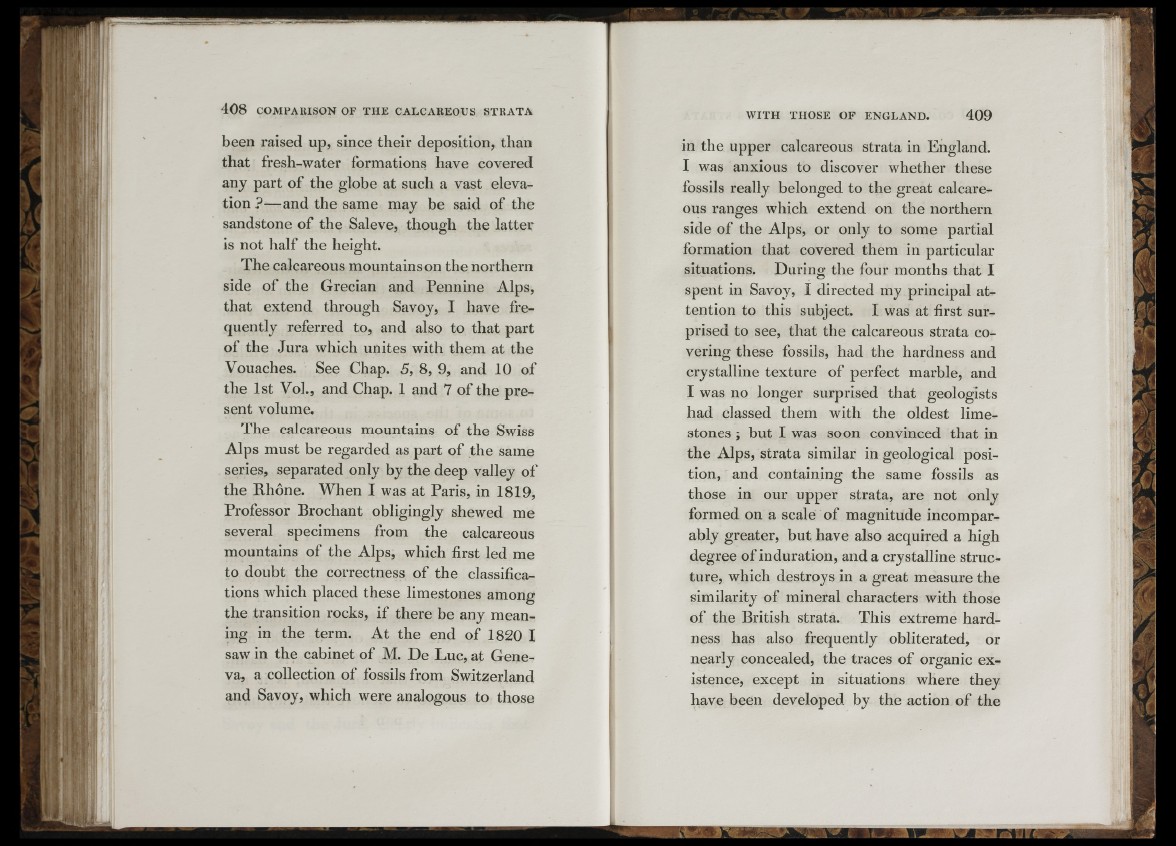
, i ■ II'! ! ■: •r• •1• ':l. :
■
I X X A i |:
F
î'-'
been raised up, since their deposition, than
that fresh-water formations have covered
any part o f the globe at such a vast elevation
?— and the same may be said of the
sandstone of the Saleve, though the latter
is not half the heigoht.
The calcareous m ountains on the northern
side of the Grecian and Pennine Alps,
that extend through Savoy, I have frequently
referred to, and also to that part
of the Jura which unites with them at the
Vouaches. See Chap. 5, 8, 9, and 10 of
the 1st Vol., and Chap. 1 and 7 of the present
volume.
The calcareous mountains of the Swiss
Alps must be regarded as part of the same
series, separated only by the deep valley o f
the Rhone. When I was at Paris, in 1819,
Professor Brochant obligingly shewed me
several specimens from the calcareous
mountains of the Alps, which first led me
to doubt the correctness of the classifications
which placed these limestones among
the transition rocks, if there be any meaning
in the term. At the end o f 1820 I
saw in the cabinet of M. De Luc, at Geneva,
a collection o f fossils from Switzerland
and Savoy, which were analogous to those
in the upper calcareous strata in England.
I was anxious to discover whether these
fossils really belonged to the great calcareous
ranges which extend on the northern
side o f the Alps, or only to some partial
formation that covered them in particular
situations. During the four months that I
spent in Savoy, I directed my principal attention
to this subject. I was at first surprised
to see, that the calcareous strata covering
these fossils, had the hardness and
crystalline texture of perfect marble, and
I was no longer surprised that geologists
had classed them with the oldest limestones
; but I was soon convinced that in
the Alps, strata similar in geological position,
and containing the same fossils as
those in our upper strata, are not only
formed on a scale of magnitude incomparably
greater, but have also acquired a high
degree of induration, and a crystalline structure,
which destroys in a great measure the
similarity of mineral characters with those
of the British strata. This extreme hardness
has also frequently obliterated, or
nearly concealed, the traces of organic existence,
except in situations where they
have been developed by the action of the